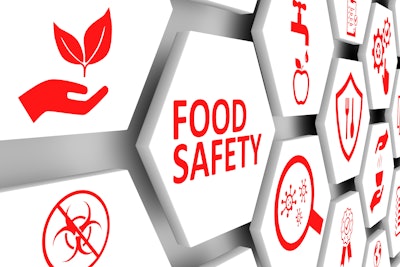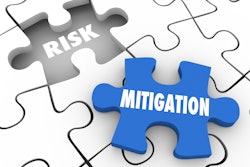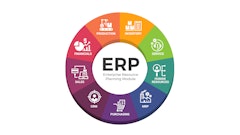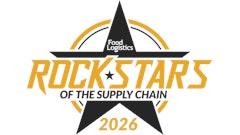
Manufacturers must navigate amid a wave of regulatory scrutiny and shifting consumer expectations. Intensified by economic and supply chain challenges, small and mid-sized manufacturers face mounting pressure to rethink how they source ingredients and track them through production. It’s no small task, but with the right tools, manufacturers are able to effectively manage risk, maintain compliance, and adapt for future success.
The regulatory re-set
For food and beverage manufacturers, 2025 has been a year marked by continuous change. The first month of the year brought an FDA ban on Red No. 3 dye, which has sparked subsequent changes to ingredient sourcing. In recent months, the FDA has proposed extending the Food Safety Modernization Act Rule 204 compliance deadline. This rule is slated to set new standards for recordkeeping on high-risk foods, including faster and more detailed tracking of ingredients across the supply chain as well as a mandate that manufacturers be able to produce clear documentation within 24 hours of a request. Whether the compliance deadline is confirmed for January 2026, or extended to the recently proposed July 2028, the appetite for food regulation is backed by popular demand.
In a recent Axios-Ipsos poll, 87% of respondents indicated the government should do more to make food safer. The combination of overwhelming consumer support and legislative action is driving major change. It’s no surprise that many of the largest food brands are committing to the phased removal of synthetic dyes.
At the core of consumers' request is visibility; simply put, they want traceability. For food manufacturers, these changes come at a tricky time, as supply chain disruptions become more frequent. Beyond natural disasters and extreme weather, tariffs add another layer of complication. Nevertheless, businesses must respond. It’s no longer enough to know who supplied the raw material, companies must be clinical in their documentation of how it moves through recipes, production lines, and distribution channels.
Traceability as a strategic imperative
Traceability means following each ingredient from supplier to shelf; but that’s easier said than done. Taking a bakery for example, proper traceability means documentation from the farm source, monitoring wheat batches through milling and baking and ensuring allergen data is accurately carried into packaging. So, when considering that level of detail scaled across each product, it’s clear why pen and paper approaches quickly become daunting. More realistically, they have become unsustainable.
Considering small mistakes have big consequences, manufacturers must find ways to mitigate effects in times of change. Costs can extend beyond regulatory penalties in the form of risking consumer trust, which can take years to rebuild. Fines, lower market access, financial loss, and brand damage can all quickly result from recalls. The good news is that the benefits of traceability are more than simple risk avoidance. Investing in visibility means strengthening supply chains, which crucially enables the ability to respond faster to disruption and in turn improves customer confidence amid times of change.
Especially for small and mid-sized producers, rapid periods of change present challenges. Unlike major players, they often don’t have dedicated compliance teams or massive IT infrastructures to work with. That said, the risk of falling behind is no less serious. Given the stakes, it’s essential to strategically equip businesses with the right tools.
How cloud-based ERP adds in visibility
The imperative from consumers is clear, but for many manufacturers, visibility is a missing ingredient. Legacy systems and manual spreadsheets only exasperate challenges, making it more difficult to connect sourcing data with production records, documentation, and regulatory reporting. Cloud-based ERP systems address this gap by centralizing information across procurement, recipe management, production scheduling, and compliance documentation.
With a unified platform, manufacturers can track a single ingredient from purchase order to finished product. Real-time dashboards provide insights into supplier performance, batch traceability, and quality assurance. When regulators or customers request proof of sourcing, documentation can be pulled in minutes, not days; an essential shift for upcoming mandates. The shift from manual to automated traceability embeds compliance into daily operations, increasing efficiency and reducing manual errors. Considering regulations often require timely access to detailed records, cloud-ERPs reduces the administrative burden on staff and minimizes the risk of missing or inaccurate data.
Automated recordkeeping can cover recipe changes, allergen tracking, expiration dates, and certifications. Instead of storing information in disconnected files, manufacturers can maintain a single source of truth that auditors and inspectors' trust. For small and mid-sized businesses, this means always being “audit ready,” without dedicating disproportionate resources to compliance management.
Paving the path forward for SMB food manufacturers
In the months and years ahead, small and mid-sized food manufacturers can expect continuing changes as regulatory requirements continue to tighten, consumers demand transparency, and supply chain uncertainty shows no signs of easing. In times of change, the very thing that consumers demand can also help manufacturers provide what’s requested: visibility.
At their core, the function of cloud-based ERPs is to help manufacturers stay compliant, reduce waste, and adapt with agility. With so many inputs and moving parts, centralizing data and automating documentation are the foundations to delivering real-time visibility. Future-proofing success means embracing the tools that provide the assurance that every recipe, every batch, and every label can stand up to scrutiny.

















